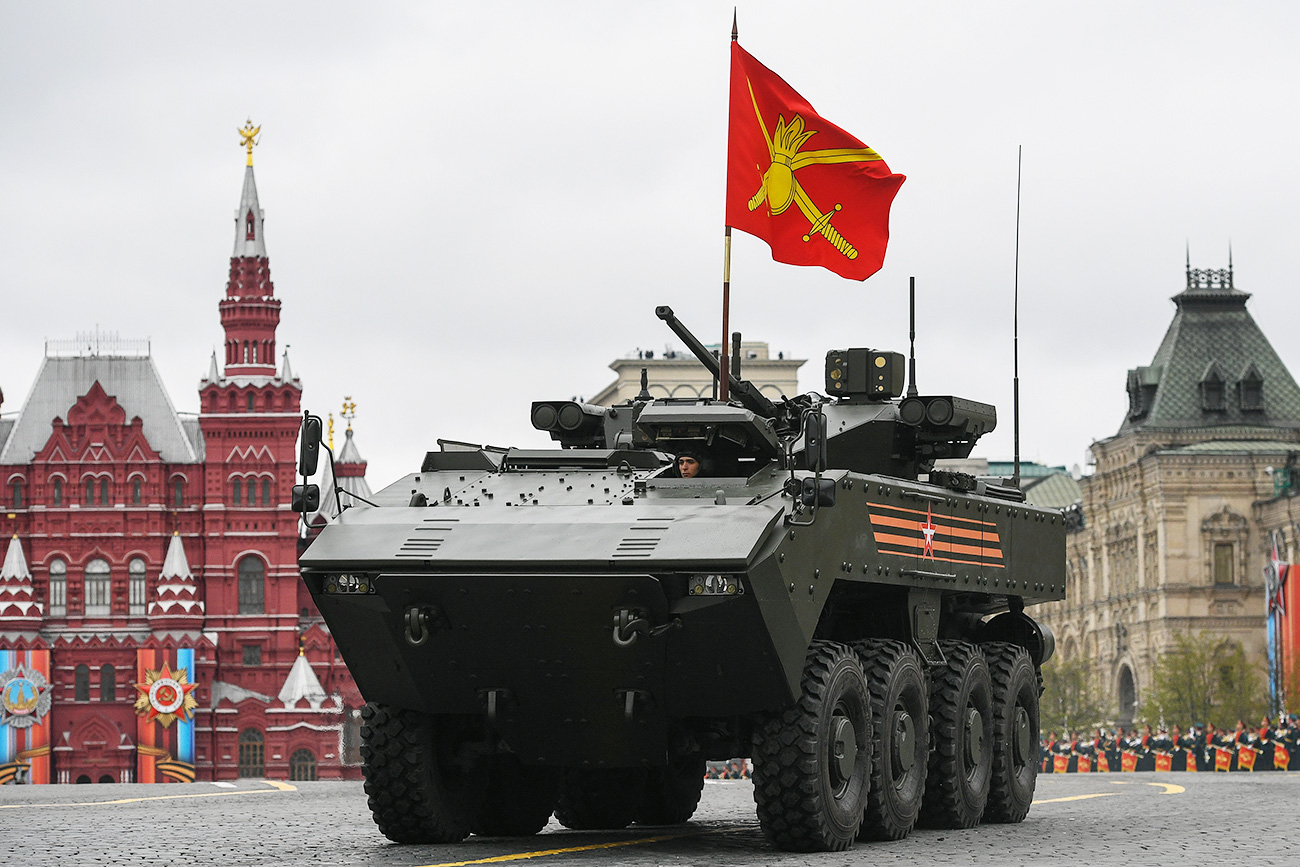
Bumerang APC during the military parade on Red Square marking the victory in the Great Patriotic War. Source: Alexander Vilf/RIA Novosti
Bumerang (Boomerang) is the newest armored personnel carrier (APC) currently being tested by the Russian military. It’s intended to replace the whole series of Russian wheeled armored vehicles, including the legendary BTR-80 and BTR-82 vehicles.
With its modular design, Bumerang can be utilized as a platform for dozens of wheeled military vehicles.
First shown privately at the Russia Arms Expo 2013, it was revealed to the public at the 2015 Victory Day Parade. However, much information about the vehicle remains under wraps.
RBTH has a look at what we know about the mysterious military APC so far.
Since detailed technical information about Bumerang is mainly classified, several of its features are known to the public.
Weighing in at 20 to 25 tones, the APC will be able to reach speeds of up to 100 km/h.
The exit door is situated at the back of the vehicle, in contrast to the BTR-82, where the doors are situated on the sides. Having the door at the rear allows soldiers to exit Bumerang more safely.
The vehicle will be armed with 30 mm 2A42 automatic guns and 7.62 PK machine guns, as well as Kornet anti-tank guided missiles. The weapons will be installed on a separate module that is operated remotely.
The vehicle can also be controlled remotely and after the operator sets the targets, Bumerang will fire and track them automatically.
The armored vehicle will be able to “swim” with the assistance of two water jets.
Bumerang also has beefed up armor to protect it from mines. One problem with the BTR-82 APCs is that it’s susceptible to explosions from the ground.
The modular design of Bumerang is very important, Viktor Murakhovksy editor-in-chief of Arsenal Otechestva magazine, told RBTH. He says modularity is one of the main aspects of the new generation military vehicles.
Modular design allows the incorporation of different turrets, weapons, sensors, and communications systems on the same carriage. By changing the modules, the APC can be converted into other types of vehicles, such as reconnaissance vehicles or mobile staff stations, the expert said.
The signal system, engine, or weapons module can be replaced in military field conditions, without the need to drag the vehicle back to the factory.
By replacing the module with small-bore guns with the module with anti-tank guided missiles, for example, Bumerang transforms into an anti-tank rocket complex.
Bumerang can be compared to many foreign analogues in terms of firepower, armor, speed etc, but its modular design makes it unique, Murakhovsky explained.
Its closest counterpart is the AMV military vehicle, designed by the Finnish defense industry company Patria. With its modular design, it can also be converted into different types of military vehicles.
As Alexander Krasovitsky, CEO of the Military Industrial Company told Izvestia, Bumerang has no rivals in the world. Neither the Finnish Patria AMV, nor American Stryker come close.
More than 20 types of military vehicles based on Boomerang’s platform are currently being studied and designed, Murakhovsky added.
Production of the Bumerang APC may start in 2019.
If using any of Russia Beyond's content, partly or in full, always provide an active hyperlink to the original material.
Subscribe
to our newsletter!
Get the week's best stories straight to your inbox